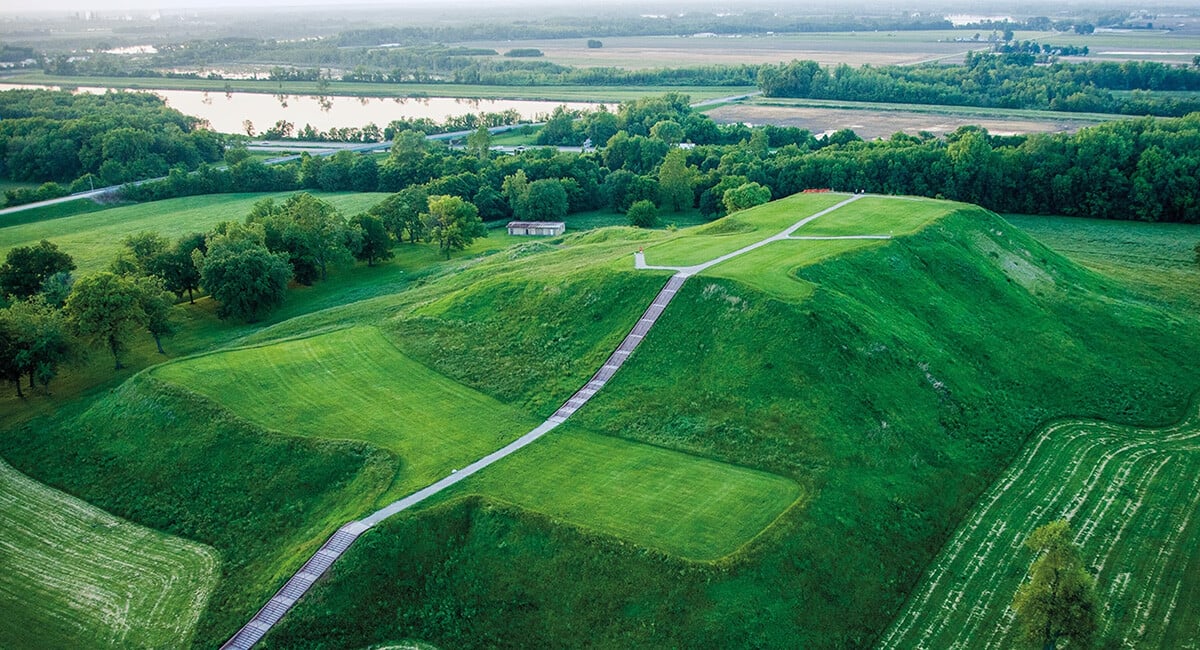In a groundbreaking collaboration, RIEGL‘s advanced geospatial technology is playing a pivotal role in uncovering the mysteries of Cahokia Mounds, one of North America’s most significant archaeological sites. The RIEGL miniVUX-3UAV system, a state-of-the-art airborne laser scanner, is at the forefront of this exploration, providing researchers with unprecedented precision and efficiency.
Original Source - REIGL
Designed for integration with UAVs, the RIEGL miniVUX-3UAV system offers a selectable laser pulse repetition rate of up to 300 kHz, delivering up to 100,000 measurements per second. This innovative technology allows for echo digitisation and online waveform processing, enabling researchers to penetrate dense foliage and capture detailed data without disturbing the ground.
The collaboration between the National Geospatial-Intelligence Agency (NGA), Saint Louis University Research Institute (SLU), and the Taylor Geospatial Institute (TGI) is leveraging RIEGL‘s system to map and analyse the Cahokia Mounds with remarkable accuracy. The RIEGL miniVUX-3UAV’s compact design and robust aluminum housing make it ideal for various UAV platforms, ensuring flexibility and ease of use in the field. Watch the video below to get a quick overview of the project.
This project was important for NGA, SLU, and TGI because it leveraged modern geospatial technologies to uncover ancient secrets at Cahokia. This innovative approach not only enhances our understanding of Cahokia’s historical significance but also demonstrates the transformative power of modern geospatial technologies in uncovering the mysteries of the past. The collaboration showcased the power of geospatial intelligence in archaeological research, fostering innovation and advancing the capabilities of each organisation. As RIEGL continues to push the boundaries of geospatial technology, the secrets of Cahokia Mounds are gradually coming to light, promising a deeper appreciation of this remarkable archaeological site.

COLLINSVILLE, IL — Cahokia Mounds is a perplexing ancient Native American site containing more than 100 earthen burial and ceremonial mounds. Located east of downtown St. Louis, what is known about the prehistoric native people who constructed the site comes primarily from pottery fragments, pieces of shell, and bits of copper, wood, and stone etched with symbols.
While the original inhabitants of Cahokia are often referred to as “Mississippian” people, no definitive text or extant oral tradition indicates what they actually called themselves.
Together, the National Geospatial-Intelligence Agency (NGA), Saint Louis University (SLU), and the Taylor Geospatial Institute (TGI), are shedding light on the prehistoric secrets that time and history have obscured at Cahokia. Led by Justin Vilbig, a SLU PhD candidate in the remote sensing lab of Dr. Vasit Sagan and a TGI data scientist, the team is turning to cutting-edge geospatial tools and technologies such as unmanned aerial vehicles (UAVs) and Light Detection and Ranging technology (LiDAR) to answer longstanding questions about Cahokia without ever having to pierce the ground with shovel or pickax.
Last autumn, the team scanned about 1.5 square kilometers of the Cahokia Mounds site through UAV and other tools to help gather new information about the site without having to disturb it. Since LiDAR can capture minute variations in elevation even beneath the shroud of vegetation or other confounding cover, it is a valuable technology for archeology, agriculture, forestry, and several other domains and is a cornerstone to many types of research at TGI.
Vilbig works as a data scientist at TGI, a consortium led by SLU that includes Donald Danforth Plant Science Center, Harris-Stowe State University, University of Illinois Urbana-Champaign, Missouri University of Science & Technology, University of Missouri-Columbia, University of Missouri-St. Louis, and Washington University in St. Louis. The consortium tackles several research areas that require many different means for collecting and sharing geospatial data ranging from health to plant science.
For Cahokia Mounds, Vilbig and his TGI colleagues flew UAVs outfitted with LiDAR sensors along east-west flightpaths, while his NGA collaborators, geodetic surveyors Philip “Casey’’ Shanks and Stacy “Craig’’ Ackermann, conducted complimentary flights along north-south tracks. “Then you can merge those datasets, and you have a better ability to resolve some of those fine details,” Vilbig said.
One area the team was able to uncover more information about with the use of LiDAR data is an elusive causeway that was identified by archaeologists working in the area years ago but is now covered by brush and forest. Now that this is collected, it will be formatted and refined to help provide more insights. “Part of our hope with this UAV collections is that we’ll get much better resolution for that causeway identification and context,” he said.
Vilbig added that the team is also searching for the location and extent of “borrow pits,” which are slight depressions in the ground that mark where ancient builders might have sourced earth to construct mounds. He said that he and the team of geospatial scientists are even open to discovering features that might have escaped the notice of archaeologists for decades.
Vilbig noted that the non-destructive surveys are even more important because much of the area of Cahokia and other mound sites across the region has already been impacted by modern activities, such as agriculture or road building. This, he said, means that untold features of history have already been lost. “My hope is that we are able to claw back some of that story and tell that story with more richness and more detail,” Vilbig said. “If we have technology that allows us to answer questions without destroying that should always be our first line of investigation.”
With the LiDAR data collected, Vilbig said that he is now setting about analysing that data. While he has detected the causeway in the data that he and the NGA team collected, he’s working on refining his analysis to identify the feature even more clearly. Justin, his TGI colleagues, and NGA scientists will return to Cahokia to do more collections in the coming months. “As we’re digging into the data more, there might be more that we had not necessarily planned to find that warrants further investigation and reporting,” Vilbig said. 
Acknowledgements
This article was first published in the Taylor Geospatial Institue.


